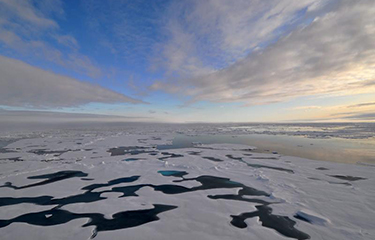NOAA Fisheries updates climate science regional action plans

NOAA Fisheries has updated its Climate Science Regional Action Plans, providing new guidance to fisheries managers through 2024.
“The newly released plans build upon ongoing efforts first launched in 2015 by NOAA Fisheries to address climate change,” NOAA Fisheries said in a release. “They highlight our current and planned efforts with partners to better track, understand, forecast, and use information on changing ocean and climate conditions and address the key objectives of the NOAA Fisheries Climate Science Strategy.”
The agency first introduced its Climate Science Strategy in 2015 as a response to growing demand for better information on how climate change is impacting fisheries and how fisheries managers and stakeholders should respond to changing ocean conditions. The overarching strategy was meant to be adapted to each fisheries region, and in 2016, NOAA Fisheries put out its first Climate Science Regional Action Plans to do just that.
Last week, NOAA Fisheries released updated versions of the regional plans, which will help guide fisheries management through 2024. According to the agency, the plans include actions that will enable decision-makers to track changes, forecast conditions, assess risks, evaluate best strategies, and prepare for change.
The agency pointed to its 2022 stock assessments as an example of how climate change is affecting fisheries. In 2022, the stock assessment found “significant declines in snow crab and Bristol Bay red king crab,” and regulators ended up closing that fishery in response.
“These population crashes were likely a result of the 2019 marine heatwave in the North Pacific, which has been attributed to climate change,” NOAA Fisheries said. “This event, and others like it, demonstrate just what is at stake. That’s why addressing climate change at the national, regional, and local levels has been—and continues to be—a top priority for NOAA Fisheries.”
The updated plans cover six regions:
- Northeast U.S.
- Southeast U.S.
- Western U.S.
- Alaska - Gulf of Alaska
- Alaska - Eastern Bering Sea
- U.S. Pacific Islands
NOAA Fisheries also put out a new Arctic Regional Action Plan as well as a plan for NOAA Fisheries Headquarters Offices.
“The Arctic Plan identifies steps to address climate change and advance climate-informed decision-making in the Chukchi and Beaufort Seas,” the agency said. “It outlines measures specifically designed to address the unique challenges of the rapidly-changing Arctic region, such as decreases in the extent of summertime sea ice and its impacts on the entire ecosystem.”
One of the main priorities of the Arctic Plan is to improve communication and collaboration between the government and Alaskan tribes and communities.
In June, U.S. President Joe Biden’s administration unveiled a framework for distributing USD 2.6 billion (EUR 2.4 billion) in funding from the Inflation Reduction Act set aside for coastal resilience and fisheries support. Among other things, the framework included USD 575 million (EUR 537 million) for the Climate Resilience Regional Challenge, a new competitive grant program to develop regional approaches to climate resilience, USD 100 million (EUR 93 million) for Ocean-Based Climate Resilience Accelerators, and USD 60 million (EUR 56 million) to support climate-ready workforce initiatives.
“Under President Biden’s leadership, we are making the most significant direct investment in climate resilience in the nation’s history,” U.S. Secretary of Commerce Gina Raimondo said.
Photo courtesy of Pablo Clemente-Colon/National Ice Center






Share